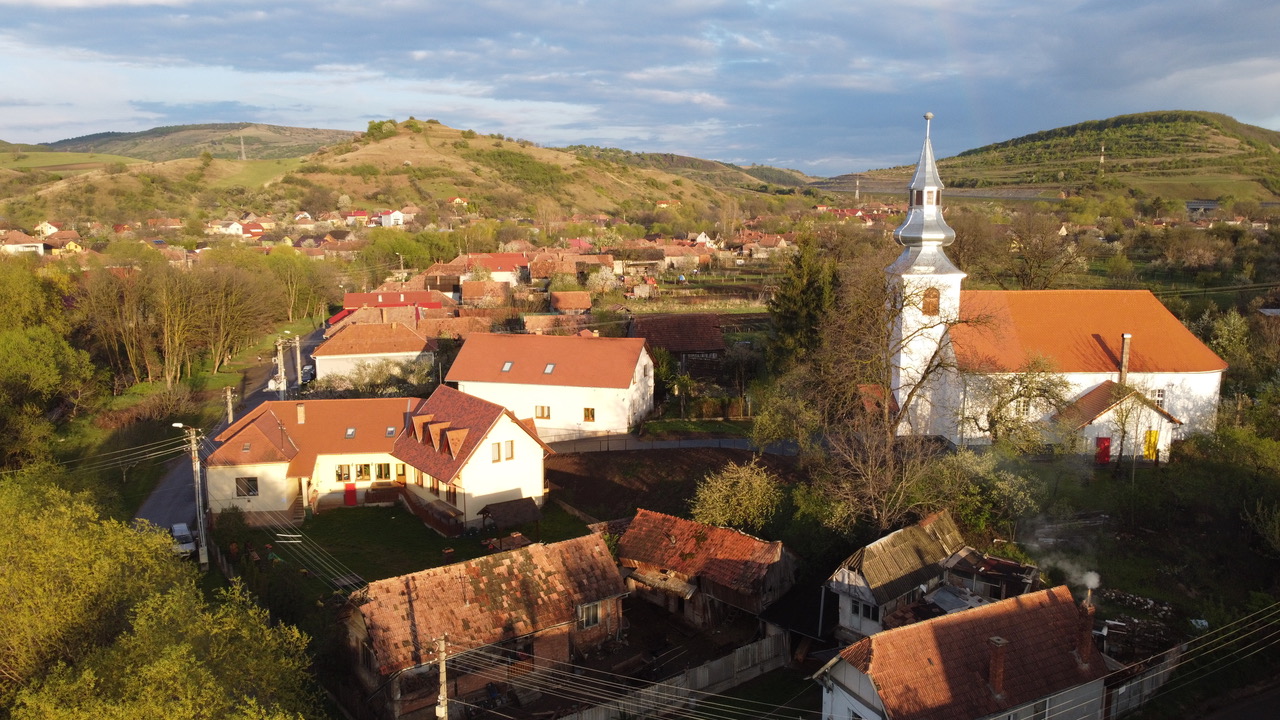Vlaha
Vlaha is the second most populous village in the municipality of Săvădisla. According to archaeological excavations prior to the construction of the highway, the place was inhabited in the Late Bronze Age (around 1000-1200 BC), and from the 6th century onwards, during the period of the migration of the people, the area was also inhabited by Gepids. One of the largest Gepid cemeteries in Transylvania was found here.
It takes its name from the Fenes stream that flowed through the settlement. The word ‘fenes’ is derived by linguists from the Hungarian verb fen, meaning water in which there are stones suitable for grinding.
The first written record of the village dates from 1263, when it was known as Fenes, and from 1332 it is mentioned in papal documents as Olafenes, Olaufenes, Valahfenes. It was distinguished from other settlements along the Fenes stream, Szászfenes and Kisfenes, by the Olach (Valah, Romanian) vernacular name. From the middle of the 19th century the name of the settlement was changed to Ófenes from 1889 to Magyarfenes (Hungarian Fenes). The Romanian name of the village appears in documents from 1733 in the form Vlaha, Blaha, Blahu, and in the early 20th century also as Feneșul Unguresc.
Ethnographically, together with Liteni and Săvădisla, it is on the periphery of Kalotaszeg towards the Arieș region.
Vlaha appears in the papal tithe registers in the Árpád period (1000-1301), and its Roman Catholic church was already standing in 1285. The church’s fragmentary wall paintings from the 14th century are attributed by experts to Nicholas of Cluj, whose sons, Martin and George, made the statue of St George the dragon-slayer in Prague.
In the 13th-14th centuries the village was part of the Transylvanian bishopric of the Kalota archbishopric, and in the censuses of the 18th-19th centuries it is recorded as part of the Upper Cluj county. Until 1940 it was a municipality with Luna de Sus and Stolna, but the Second Vienna Award drew the state border between Luna de Sus and Vlaha on the Stolna stream between North Transylvania and South Transylvania, Hungary and Romania, Vlaha remained in South Transylvania, so it was annexed to the municipality of Săvădisla.
The village became the property of the Kamuthy family in the second half of the 16th century. The estate and the manor belonging to it were inherited several times in the 17th and 18th centuries through the female line, so that it was owned by Mikola, Csáky and Haller, while it became the property of the Jósika barons de Branyicska. Miklós Jósika (1794-1865), the creator of the Hungarian Romantic novel, was raised in the castle of Vlaha, built in the 17th-18th centuries. The Jósika barons sold the castle to the people of the village in 1936, and the building complex was demolished by the locals and used as building material.
The village’s Reformed church was built in 1820-21.
Vlaha had 1348 (1343 Hungarians, 5 Romanians) inhabitants in 1930, 1254 (1237 Hungarians, 17 Romanians) in 1977, 913 (909 Hungarians, 4 Romanians) in 1992, 971 (898 Hungarians, 50 Romanians) in 2011 and 987 (856 Hungarians, 113 Romanians) in 2021.
In the 2021 census, 703 people declared themselves Reformed, 116 Roman Catholic, 84 Orthodox, 11 Greek Catholic, four to four Baptist or Pentecostal, and eight Jehovah’s Witnesses.
In Vlaha, a choir was formed in 1876, and in 1924 an amateur theater group was formed. Both groups are still active. The Vlaha football team, founded in 1947, has been playing in the Cluj county championship since 2006 under the name Progresul. Since 1998, Vlaha has been one of the venues of the St. Stephen’s Day Folk Dance Festival. Every year, folk dance groups from all over Europe parade through its streets and perform on the open-air stage in front of the Culture Centre. On the outskirts of the village, sculptor Ernő Bartha has created a sculpture park of monumental hay sculptures, which hosts cultural events several times a year. The events of the village’s only stork’s nest can be followed live on Clujbird.ro.
Vlaha has a Hungarian-language kindergarten and elementary school. The village has outgrown its old cultural centre and has built a new one.
The village is connected to the national gas network, about 90 percent of its streets have running tap water and are connected to the sewer system. About 80 percent of its streets are paved with asphalt.
The village is the birthplace of painter Péter Balázs (1919-2003).
The inhabitants
0
The first documentary attestation
0
- UAT Săvădisla
- 1,329
Contact
- Main Street, No. 35, Săvădisla Commune, 407505, Cluj County
- +40 264 374 275
- +40 264 374 275
- primsav@yahoo.com
Useful



